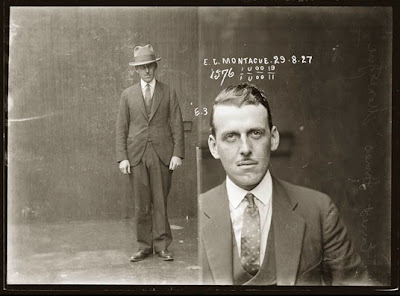 |
| Vincent, left, and Jules settle a score. |
Some may quibble with “Pulp Fiction”’s herky jerky storyline. It dodges back and forth from the past to the present without warning. The trouble is, at first it’s challenging to figure out exactly what is happening in the present and what took place in the past.
You have to watch it more than one time before the sequence of events starts to make sense – and it does. There is really no “present” in the film. Each sequence, no matter where it fits into the story, past, present or future, is the only present you have to pay attention to.
The Oscar-winning “Pulp Fiction” screenplay is so skillfully written that you barely notice its complex time shifts. You just surf the narrative wave from beginning to end, and come in for a soft landing at the end of a fairly wild ride – is it just a coincidence that the opening music is Dick Dale’s surf guitar blast, “Miserlou”?
Knocked Off-Balance
Director and screenwriter Quentin Tarantino’s non-linear storytelling – he co-wrote the script with Roger Avary – is hardly the artifice some make it out to be. In fact, the darting and weaving storyline serves a purpose, other than keeping the audience slightly off-balance, and the film would not be nearly as effective without it.
 |
| Honey Bunny, left, and Pumpkin. |
The beginning and ending scenes are part of the same sequence. On an impulse, Pumpkin (Tim Roth) and Honey Bunny (Amanda Plummer) hold up a diner, but their plan goes awry when they unexpectedly meet up with Jules Winnfield (Samuel L. Jackson) and Vincent Vega (John Travolta), two mobbed-up hitmen.
Coffee and Handguns
The beginning sequence shows Honey Bunny and Pumpkin, over coffee and breakfast, hatching a plan to rob the diner. They kiss, brandish weapons, then go to work scaring everyone in the joint. Their plan is to clean out the cash register and grab everyone’s wallet without incident.
The scene cuts away to the opening credits, after which we begin meeting the motley cast of characters who inhabit L.A.’s underbelly.
The story plays out, and we're back at the same diner where we started, but Jules and Vincent, as it turns out, are catching some breakfast there, too. The four characters collide, of course, and the result is as anxiety-provoking and hilarious as the rest of the movie.
Ends at the Beginning
When you piece it together, though, the entire diner sequence actually takes place in about the middle of the story. By the time we reach the last scene we don't know how the diner stand-off between robbers and mobsters will end. But we do know what is going to happen after the scene is over, and we have seen everything that led up to it. But why put this out of sequence scene where it is in the film?
 |
| Like Kung-Fu Cain. |
The answer, I think, is that it firmly establishes both the movie's theme, which is redemption, and the hero of the story, Jules. By the time we reach that fateful scene we learn that Jules has decided to leave his life of crime behind and "walk the earth like Kung-Fu Cain."
The Wrong Choice
Vincent, on the other hand, is going to keep being a mobster, and, because we've already seen the future, we know that he will meet a dark fate due to that unwise decision.
The actual ending, sequentially, is the death of Vincent and the triumph of Butch (Bruce Willis), the corrupt prizefighter who double-crossed the mob. But the film ends with Jules and Vincent, who are about to part ways as crime partners, exiting the diner into the blinding L.A. sun. It’s a new day, and Jules has found redemption. It’s the perfect place for the film to end.
A DIFFERENT WHITEY FROM BOSTON -- Warner Bros., the studio with a storied history of gangster film production, has tapped James Grey ("We Own the Night," "The Yards" and "Little Odessa") to write and direct "White Devil," inspired by the true story of Dorchester (Daw-chest-ah to the locals) native John Willis, who was adopted by a Chinese family and allegedly rose to the top of the Asian mob in Boston. His nickname? You guessed it: White Devil.



































